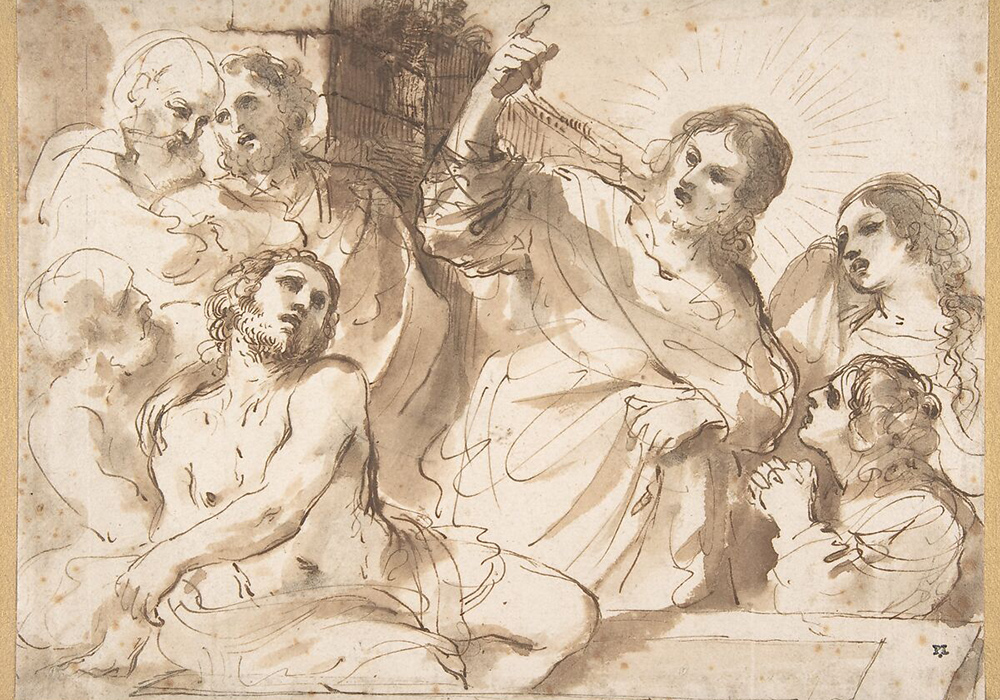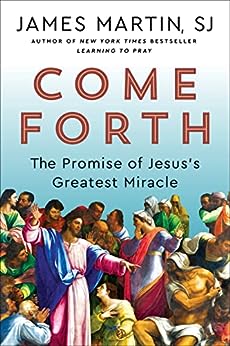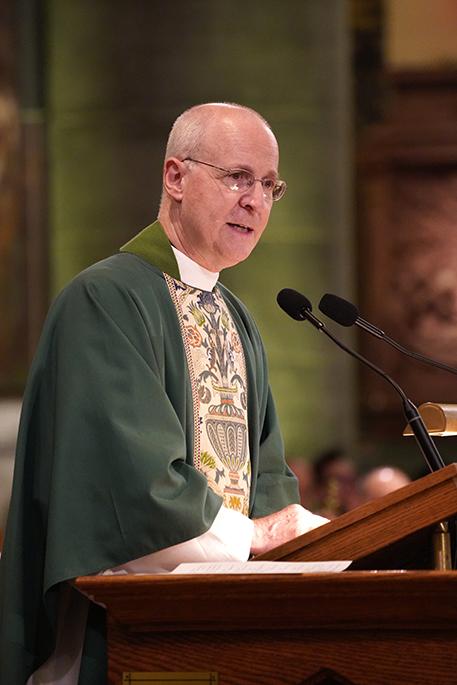
"The Raising of Lazarus," circa 1619 by Guercino (Giovanni Francesco Barbieri) (Metropolitan Museum of Art)
Jesuit Fr. James Martin's newest book, Come Forth: The Promise of Jesus's Greatest Miracle, explores our everyday metaphorical deaths and resurrections through the biblical story of Jesus and Lazarus.
Martin spoke to NCR about what he learned through writing about this mysterious Gospel figure, why the account is still relevant today and the hopes he has for the book's readers. The following conversation has been edited for clarity and length.
NCR: There are many fascinating characters and narratives in the Gospels you could have chosen as a theme for a new book. What was it about the story of Lazarus that felt most compelling to you?
Martin: When I was a teenager in the 1970s, I saw Franco Zeffirelli's mini-series "Jesus of Nazareth" on TV, and of all the scenes, it was the raising of Lazarus that most captivated me. Basically, seeing Jesus call a dead man from his tomb fascinated me, terrified me and, most of all, made me want to know more about what happened all those years ago.
More recently, in the last few years since I've started leading pilgrimages to the Holy Land, I've seen how powerful it is for pilgrims to visit Lazarus' tomb in Al-Eizariya, current-day Bethany, now in Palestinian territory. I always invite them to think of letting something "die" in the tomb, and it almost always proves a powerful experience. This all led to this new book.

In what ways might Lazarus' story be particularly relevant in our current day and age?
At first glance, the story of Jesus raising someone from the dead (one of three times he does this in the Gospels, by the way) might seem to have little relevance to our daily lives. Yet this story can speak to all of us, since all of us have things that keep us bound or unfree.
The book's overarching theme is how God calls each of us to let certain things "die" (perhaps an old resentment, an overweening ego, a desire always to be right) in order to follow God more closely. At various points in our lives, God calls us out of our "tombs" and into new life.

Jesuit Fr. James Martin delivers the homily during the closing Mass for the Outreach LGBTQ Catholic Ministry Conference at the Church of St. Paul the Apostle June 18 in New York City. Martin's book Come Forth explores our everyday metaphorical deaths and resurrections through the biblical story of Jesus and Lazarus. (OSV News/Gregory A. Shemitz)
You do a lot of advocacy for the full inclusion of LGBTQ+ Catholics in church life. Do you find that this Gospel story speaks to the liberation of marginalized peoples?
Absolutely! In fact, the actual words that Jesus uses at Lazarus' tomb in Bethany, translated in the simplest way from the Greek, are "Come out!" (I told my publisher that if that was the title people would misinterpret it!) But the invitation to "come out" and embrace who you are, celebrate your gifts and accept how God loves you, is something that many marginalized people will understand. Of course we're all called to conversion and to look at our sinful patterns, but the deeper invitation is to accept God's love as you are.
What is something that surprised you when researching or writing Come Forth?
Many things, but most prominently the possibility that Lazarus could be the beloved disciple in John's Gospel, a figure whose identity scholars still debate. In the book, I explore the reasons that some New Testament scholars believe this. For example, when Martha and Mary send word to Jesus that their brother is ill they call him "he whom you love." After this incident, the beloved disciple begins to appear in the Gospel, as if that were his introduction into the narrative.
Later, in John 21, at the breakfast by the sea, when the risen Christ has a long dialogue with Peter, there is another hint. At the end of their dialogue, Jesus says to Peter about the beloved disciple, "If it is my will that he remains until I come, what is that to you?" Then John writes that the rumor arose that this disciple would not die.
Now, why would they believe that about, say, a Galilean fisherman? Only Lazarus, the man raised from the dead, makes sense in this context. In any event, the book sifts through all the "proofs" for Lazarus as what scholars call the "BD."
Advertisement
Lazarus is a familiar figure in our culture, often serving as metaphor or point of reference, even among non-Christians. Did you find inspiration in art, music, poetry, or any other medium that might be considered unlikely?
A good portion of the book looks at just that. Lazarus as he has been portrayed in culture throughout the centuries, in all the genres you mentioned. Ironically, one recurring theme of Lazarus' story in poetry and plays is that he doesn't want to come back from the dead!
But I think that the most powerful artistic influences on me were two novels, Lazarus is Dead by Richard Beard and The Gospel According to Lazarus by Richard Zimler, both of which try to recreate the world of first-century Bethany and give Lazarus a bit of a backstory. Of course nearly all of this is imaginative, but we need to remember that Lazarus, as well as his sisters Martha and Mary, were not fictional characters but real people with real stories in a real place. Part of my book aims to reconstruct these histories and answer the question, "What can we know about them?"
What do you hope the reader takes away from this book?
That even though we're not Lazarus and shut away in our tombs in Bethany 2,000 years ago, there are parts of us that need to "die" or be "left behind in the tomb" in order to experience new life. And that at key moments in our lives God offers us new life and new possibilities, saying to us, as Jesus did to Lazarus, "Come forth!"







